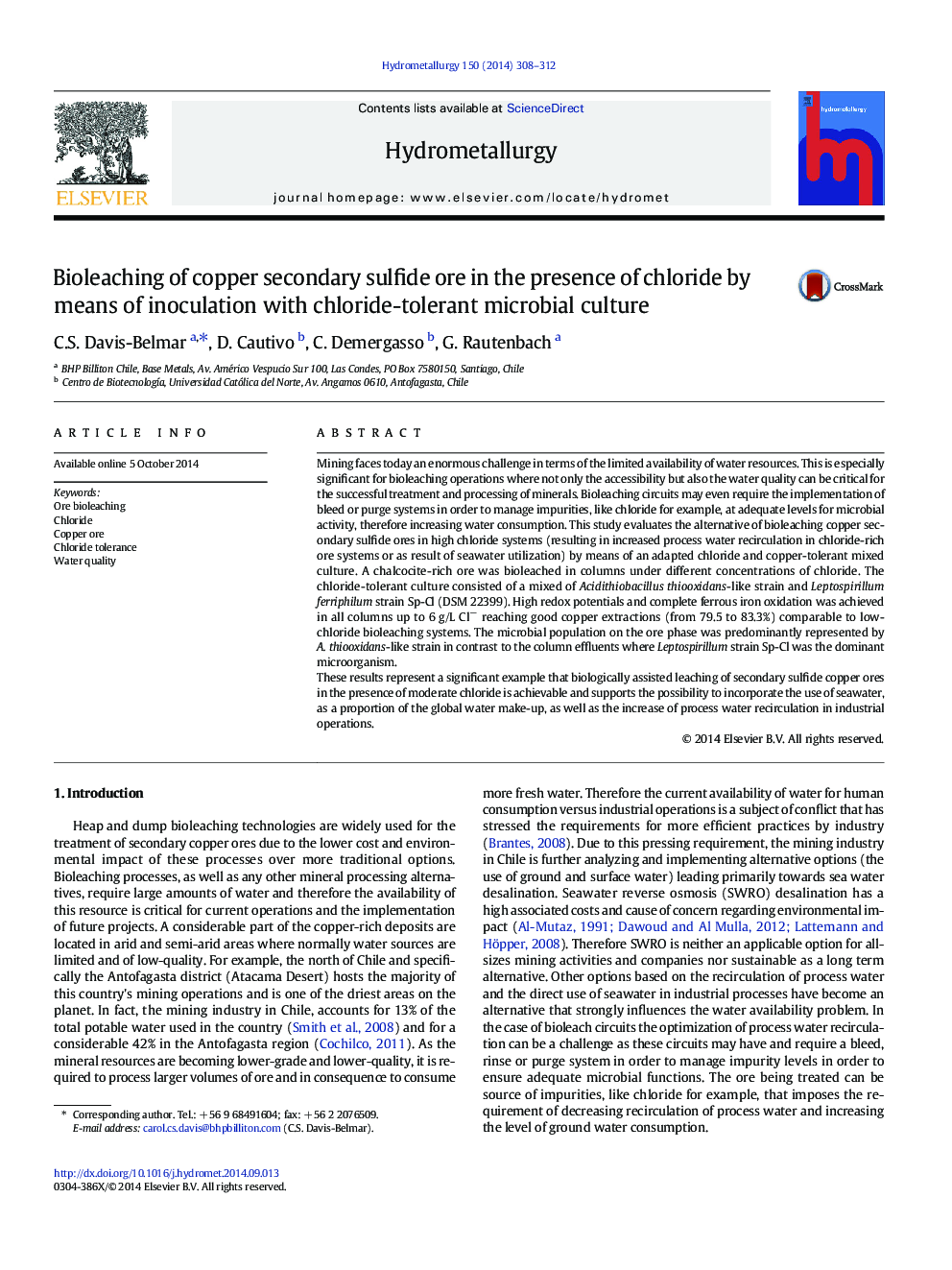| Article ID | Journal | Published Year | Pages | File Type |
|---|---|---|---|---|
| 212186 | Hydrometallurgy | 2014 | 5 Pages |
•Secondary sulfide copper ore was leached in the presence of chloride by means of inoculation with chloride-tolerant culture•Culture contained Leptospirillum strain Sp-Cl and A. thiooxidans-like strain.•Highest copper recovery was achieved at 6 g/L Cl-•Similar CuT extraction and slightly higher Py oxidation was achieved in Cl--tolerant over mesophilic column at 1.5 g/L Cl−•L. strain Sp-Cl was dominant in column effluents and A. thiooxidans-like strain on residues
Mining faces today an enormous challenge in terms of the limited availability of water resources. This is especially significant for bioleaching operations where not only the accessibility but also the water quality can be critical for the successful treatment and processing of minerals. Bioleaching circuits may even require the implementation of bleed or purge systems in order to manage impurities, like chloride for example, at adequate levels for microbial activity, therefore increasing water consumption. This study evaluates the alternative of bioleaching copper secondary sulfide ores in high chloride systems (resulting in increased process water recirculation in chloride-rich ore systems or as result of seawater utilization) by means of an adapted chloride and copper-tolerant mixed culture. A chalcocite-rich ore was bioleached in columns under different concentrations of chloride. The chloride-tolerant culture consisted of a mixed of Acidithiobacillus thiooxidans-like strain and Leptospirillum ferriphilum strain Sp-Cl (DSM 22399). High redox potentials and complete ferrous iron oxidation was achieved in all columns up to 6 g/L Cl− reaching good copper extractions (from 79.5 to 83.3%) comparable to low-chloride bioleaching systems. The microbial population on the ore phase was predominantly represented by A. thiooxidans-like strain in contrast to the column effluents where Leptospirillum strain Sp-Cl was the dominant microorganism.These results represent a significant example that biologically assisted leaching of secondary sulfide copper ores in the presence of moderate chloride is achievable and supports the possibility to incorporate the use of seawater, as a proportion of the global water make-up, as well as the increase of process water recirculation in industrial operations.
